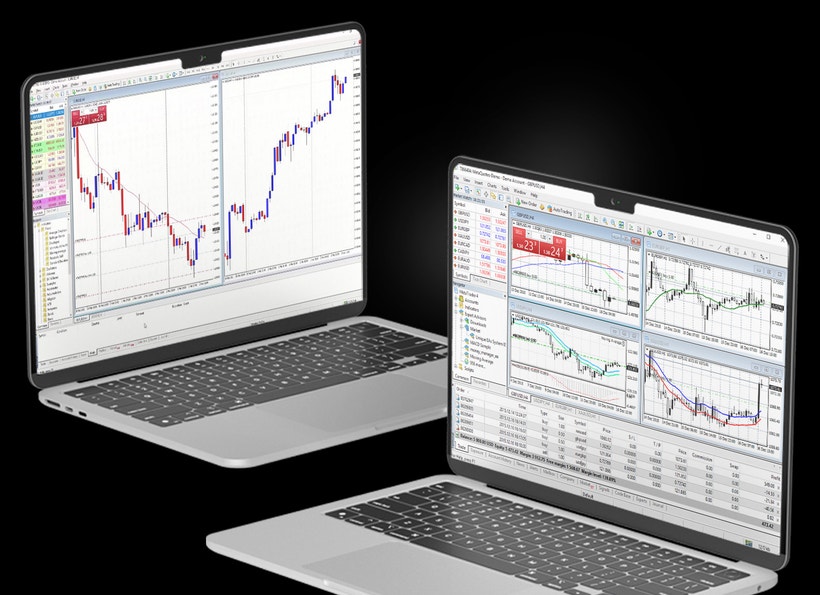MetaTrader 4 vs MetaTrader 5: which is better?
Explore the distinct benefits of MetaTrader 4 & 5; MT4 simplifies forex trading for beginners, while MT5 offers advanced tools for diverse financial markets in a more comprehensive trading experience.

MT4 vs MT5: Key Differences in Trading Platforms
MetaTrader 4 (MT4) and MetaTrader 5 (MT5) are two of the most popular trading platforms for online trading within the financial markets, particularly among forex brokers and CFD traders globally. Both platforms offer a variety of built-in technical indicators and analysis tools, yet they differ significantly in catering to diverse trading needs and experiences. MT4 is celebrated for its user-friendly interface and is specifically designed for trading forex. This makes it ideal for beginners, or traders who prioritize simplicity and efficient order execution in the forex market. It supports a variety of order types, including sell stop limit orders, and offers robust algorithmic trading capabilities through automated trading systems and Expert Advisors (EAs). This focus allows traders to seamlessly start trading with a demo account and transition to a live account for more serious engagement.
Conversely, MT5 provides a more in-depth trading experience, supporting a broader range of financial instruments, including stocks, commodities, cryptocurrencies, and futures. It features advanced algorithmic tools, such as a multi-threaded strategy tester for backtesting trading strategies and supports an integrated programming language for custom EAs. These features are particularly beneficial for traders interested in exploring multi-currency trading and diversified financial services and functionality. MT5's enhanced real-time technical analysis capabilities, including depth of market and an integrated economic calendar, offer valuable insights for informed decision-making.
What is MetaTrader 4 (MT4)?
MetaTrader 4 is a widely used electronic platform in the forex market. Known for its simplicity, MT4 provides a robust suite of charting tools, a range of built-in technical indicators, and supports algorithmic trading through EAs. This makes it a popular choice among both novice and seasoned forex traders, as it offers extensive community support and resources to enhance trading accounts.
What is MetaTrader 5 (MT5)?
MetaTrader 5 (MT5) is a versatile, multi-asset platform that supports trading across various financial markets. With advanced charting capabilities, multiple timeframes, and a robust strategy tester, MT5 caters to algorithmic traders seeking a broader trading experience beyond forex. Its support for a variety of trading tools, order types and multi-threaded features allows for efficient trade execution and diversification across numerous financial services.
MT4 vs MT5: What are the Differences?
Metatrader 4 and Metatrader 5 are both popular trading platforms, yet they differ in asset support, analytical tools, and functionalities. MT4 is tailored for forex trading with a simpler interface, while MT5 provides a broader range of asset classes and advanced features for diverse trading needs.
MetaTrader 4 Benefits
MetaTrader 4 (MT4) benefits forex traders due to its intuitive interface and specialized features. It offers robust charting tools and a wide array of technical indicators, enabling traders to perform in-depth market analysis effectively. With its support for automated trading through Expert Advisors (EAs), MT4 allows for flexible and efficient trade execution. Its extensive community and library of third-party plugins provide additional resources for customization and strategy development. Overall, MT4's user-friendly design and focus on forex trading make it the ideal platform for both beginners and seasoned traders looking to capitalize on currency market opportunities.
MetaTrader 5 Benefits
MetaTrader 5 (MT5) offers a versatile trading experience, making it suitable for traders seeking to diversify beyond forex. It supports a wider range of asset classes, including stocks, commodities, and futures, providing greater market access. MT5 features advanced charting tools and several timeframes, facilitating detailed technical analysis. Its integrated economic calendar and depth of market functionality offer valuable insights for informed decision-making. Additionally, MT5 allows for hedging and netting, catering to various trading strategies. With enhanced speed and efficiency, MT5 is ideal for traders looking to explore multiple markets with advanced tools at their disposal.
MT4 vs MT5: Which is better for forex trading?
When comparing MT4 and MT5 for trading forex, MT4 often has an edge due to its focus on forex market analysis and efficient user interface. It offers a streamlined approach for analyzing currency pairs with its comprehensive suite of forex-specific tools and supports seamless order execution. Additionally, MT4’s extensive ecosystem, featuring third-party plugins and customizable indicators, makes it highly adaptable for forex market strategies. While MT5 provides advanced customization features and supports multiple asset classes, MT4’s focus, simplicity, and rich community support make it the preferred platform for traders dedicated to a straightforward and effective forex trading experience.
How to Trade MT4 with tastyFX
- Open an account to get started, or practice on a demo account
- Open, monitor, and close positions on USD pairs
Trading forex on MT4 requires an account with a forex provider like tastyfx. Many traders also watch major forex pairs like EUR/USD and USD/JPY for potential opportunities based on economic events such as inflation releases or interest rate decisions. Economic events can produce more volatility for forex pairs, which can mean greater potential profits and losses as risks can increase at these times.
You can help develop your forex trading strategies using resources like tastyfx’s YouTube channel. Our curated playlists can help you stay up to date on current markets and understand key terms. Once your strategy is developed, you can follow the above steps to opening an account and getting started trading forex.
Your profit or loss is calculated according to your full position size. Leverage will magnify both your profits and losses. It’s important to manage your risks carefully as losses can exceed your deposit. Ensure you understand the risks and benefits associated with trading leveraged products before you start trading with them. Trade using money you’re comfortable losing. Past performance is not indicative of future results. Forex trading involves risk. Losses may exceed deposits. tastyfx is not responsible for the operation of third-party trading platform. Please see Third-Party-Platform Disclosure for full details.
